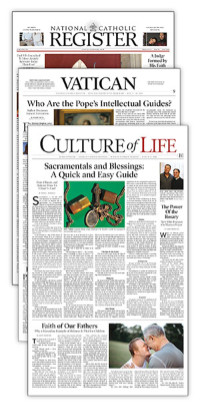India’s Cardinal Koovakad Plays Key Role Ensuring Secrecy, Validity of Conclave Voting
To ensure the secrecy of each vote, scrutineers collect the folded ballot papers from the cardinal electors and place them into a box, which is then shaken several times to mix the ballots.

India’s Cardinal George Koovakad holds the daily task of drawing the names of nine cardinal electors to serve in special roles before each round of voting in the conclave currently underway to elect the 266th successor of St. Peter.
As the most junior member of the College of Cardinals, Koovakad — the former prefect of the Vatican’s Dicastery for Interreligious Dialogue — is tasked with drawing out the names of three cardinal scrutineers, three cardinal infirmarii, and three cardinal revisers for every morning and afternoon voting session until a new pontiff is chosen, according to the Vatican’s apostolic constitution Universi Dominici Gregis.
Among the 133 cardinal electors sequestered inside the Vatican, the first three names randomly selected by Cardinal Koovakad, as the college’s junior cardinal deacon, are the “scrutineers” responsible for counting and verifying the votes during the papal conclave.
To ensure the secrecy of each vote, scrutineers collect the folded ballot papers from the cardinal electors and place them into a box, which is then shaken several times to mix the ballots. Scrutineers are also tasked with opening the ballot boxes, reading each ballot aloud, and writing down the names of the cardinal voted for in an official document.
The next three names drawn by the Indian cardinal are the “infirmarii” who are called to collect the votes of sick cardinal electors staying in the Vatican’s Casa Santa Marta who are unable to be physically present inside the Sistine Chapel with the other cardinals.
As part of the conclave voting process, infirmarii take ballot papers and a locked ballot box with an opening to the cardinal electors that are confined to their rooms due to ill health. After these votes are cast, infirmarii take the ballot box containing the ballot papers to the Sistine Chapel for counting.
Lastly, Koovakad chooses three “revisers” by lot as part of the conclave voting process. Revisers are responsible for checking the ballots and ensuring scrutineers have “performed their task exactly and faithfully,” according to the norms outlined in Universi Dominici Gregis.
Throughout the conclave, Cardinal Koovakad also serves as the porter who opens and closes the doors of the Sistine Chapel when necessary, including when the infirmarii need to bring ballot papers and collect the votes of sick cardinals.
Until a cardinal has the 89 votes — a two-thirds majority — required to become the next pope, Koovakad must continue his task of drawing by lot the nine cardinal electors tasked with ensuring the accountability and secrecy of the conclave elections.
















